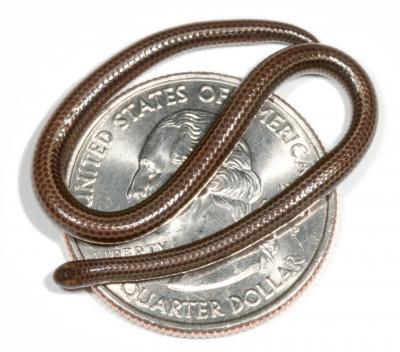|
Anilios Leptosoma
The Murchison blind snake (''Anilios leptosoma'') is a species of snake in the Typhlopidae The Typhlopidae are a family of blind snakes. They are found mostly in the tropical regions of Africa, Asia, the Americas, and all mainland Australia and various islands. The rostral scale overhangs the mouth to form a shovel-like burrowing str ... family.McDiarmid RW, Campbell JA, Touré T. 1999. Snake Species of the World: A Taxonomic and Geographic Reference, vol. 1. Herpetologists' League. 511 pp. (series). (volume). References Anilios Reptiles described in 1972 Snakes of Australia Taxobox binomials not recognized by IUCN {{Scolecophidia-stub ... [...More Info...] [...Related Items...] OR: [Wikipedia] [Google] [Baidu] |
Snake
Snakes are elongated limbless reptiles of the suborder Serpentes (). Cladistically squamates, snakes are ectothermic, amniote vertebrates covered in overlapping scales much like other members of the group. Many species of snakes have skulls with several more joints than their lizard ancestors and relatives, enabling them to swallow prey much larger than their heads ( cranial kinesis). To accommodate their narrow bodies, snakes' paired organs (such as kidneys) appear one in front of the other instead of side by side, and most only have one functional lung. Some species retain a pelvic girdle with a pair of vestigial claws on either side of the cloaca. Lizards have independently evolved elongate bodies without limbs or with greatly reduced limbs at least twenty-five times via convergent evolution, leading to many lineages of legless lizards. These resemble snakes, but several common groups of legless lizards have eyelids and external ears, which snakes lack, althoug ... [...More Info...] [...Related Items...] OR: [Wikipedia] [Google] [Baidu] |
Typhlopidae
The Typhlopidae are a family of blind snakes. They are found mostly in the tropical regions of Africa, Asia, the Americas, and all mainland Australia and various islands. The rostral scale overhangs the mouth to form a shovel-like burrowing structure. They live underground in burrows, and since they have no use for vision, their eyes are mostly vestigial. They have light-detecting black eye spots, and teeth occur in the upper jaw. Typhlopids do not have dislocatable lower jaw articulations restricting them to prey smaller than their oral aperture. All species in the family Typhlopidae are fossorial and feed on social fossorial invertebrates such as termites and ants. The tracheal lung is present and chambered in all species. One species, the Brahminy's blind snake, is the only unisexual snake, with the entire population being female and reproducing via parthenogenesis. The tail ends with a horn-like scale. Most of these species are oviparous. Currently, 18 genera are recognized ... [...More Info...] [...Related Items...] OR: [Wikipedia] [Google] [Baidu] |
Anilios
''Anilios'' is a genus of snakes in the family Typhlopidae, first described in 1845 by John Edward Gray. Geographic range Species of the genus ''Anilios'' are found predominantly in Australia, with a few species located in New Guinea. Species The following 48 species are recognized as being valid. *'' Anilios affinis'' *'' Anilios ammodytes'' *'' Anilios aspina'' *'' Anilios australis'' *'' Anilios batillus'' *'' Anilios bicolor'' *'' Anilios bituberculatus'' *'' Anilios broomi'' *'' Anilios centralis'' *'' Anilios chamodracaena'' *'' Anilios diversus'' *'' Anilios endoterus'' *'' Anilios erycinus'' *'' Anilios fossor'' *'' Anilios ganei'' *'' Anilios grypus'' *'' Anilios guentheri'' *'' Anilios hamatus'' *'' Anilios howi'' *'' Anilios insperatus'' *'' Anilios kimberleyensis'' *'' Anilios leptosoma'' *'' Anilios leucoproctus'' *'' Anilios ligatus'' *'' Anilios longissimus'' *'' Anilios margaretae'' *'' Anilios micromma'' *'' Anilios minimus'' *'' Anil ... [...More Info...] [...Related Items...] OR: [Wikipedia] [Google] [Baidu] |
Reptiles Described In 1972
Reptiles, as commonly defined, are a group of tetrapods with an ectothermic metabolism and amniotic development. Living traditional reptiles comprise four orders: Testudines, Crocodilia, Squamata, and Rhynchocephalia. About 12,000 living species of reptiles are listed in the Reptile Database. The study of the traditional reptile orders, customarily in combination with the study of modern amphibians, is called herpetology. Reptiles have been subject to several conflicting taxonomic definitions. In Linnaean taxonomy, reptiles are gathered together under the class Reptilia ( ), which corresponds to common usage. Modern cladistic taxonomy regards that group as paraphyletic, since genetic and paleontological evidence has determined that birds (class Aves), as members of Dinosauria, are more closely related to living crocodilians than to other reptiles, and are thus nested among reptiles from an evolutionary perspective. Many cladistic systems therefore redefine Rep ... [...More Info...] [...Related Items...] OR: [Wikipedia] [Google] [Baidu] |
Snakes Of Australia
Snakes are elongated Limbless vertebrate, limbless reptiles of the suborder Serpentes (). Cladistically Squamata, squamates, snakes are ectothermic, amniote vertebrates covered in overlapping Scale (zoology), scales much like other members of the group. Many species of snakes have skulls with several more joints than their lizard ancestors and relatives, enabling them to swallow prey much larger than their heads (cranial kinesis). To accommodate their narrow bodies, snakes' paired organs (such as kidneys) appear one in front of the other instead of side by side, and most only have one functional lung. Some species retain a pelvic girdle with a pair of vestigial claws on either side of the cloaca. Lizards have independently evolved elongate bodies without limbs or with greatly reduced limbs at least twenty-five times via convergent evolution, leading to many lineages of legless lizards. These resemble snakes, but several common groups of legless lizards have eyelids and external ... [...More Info...] [...Related Items...] OR: [Wikipedia] [Google] [Baidu] |

